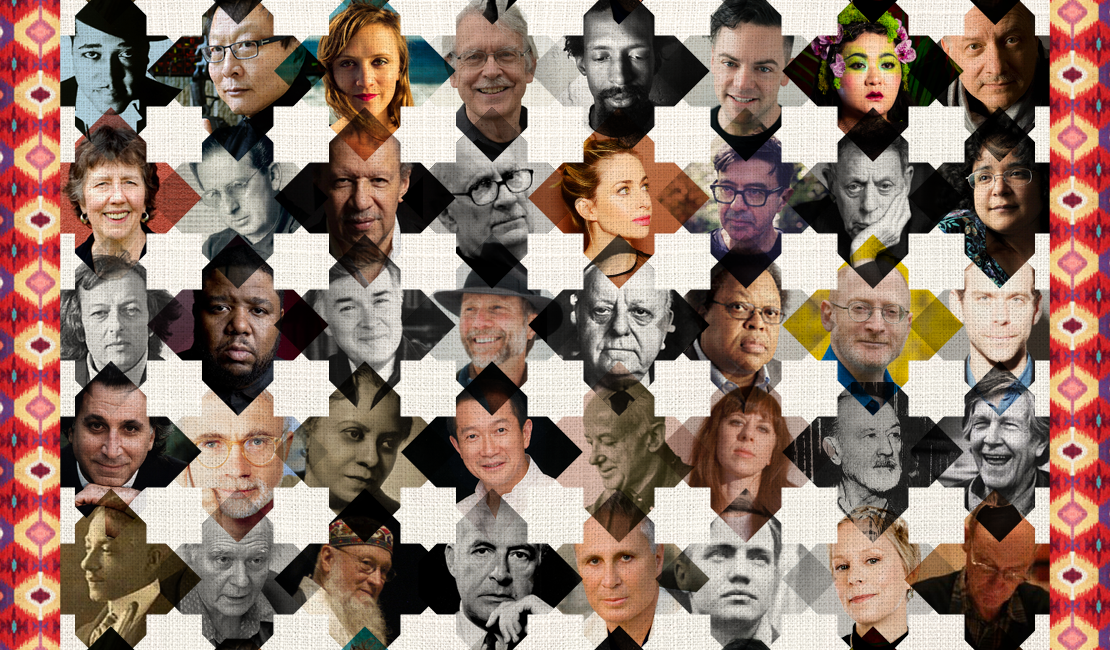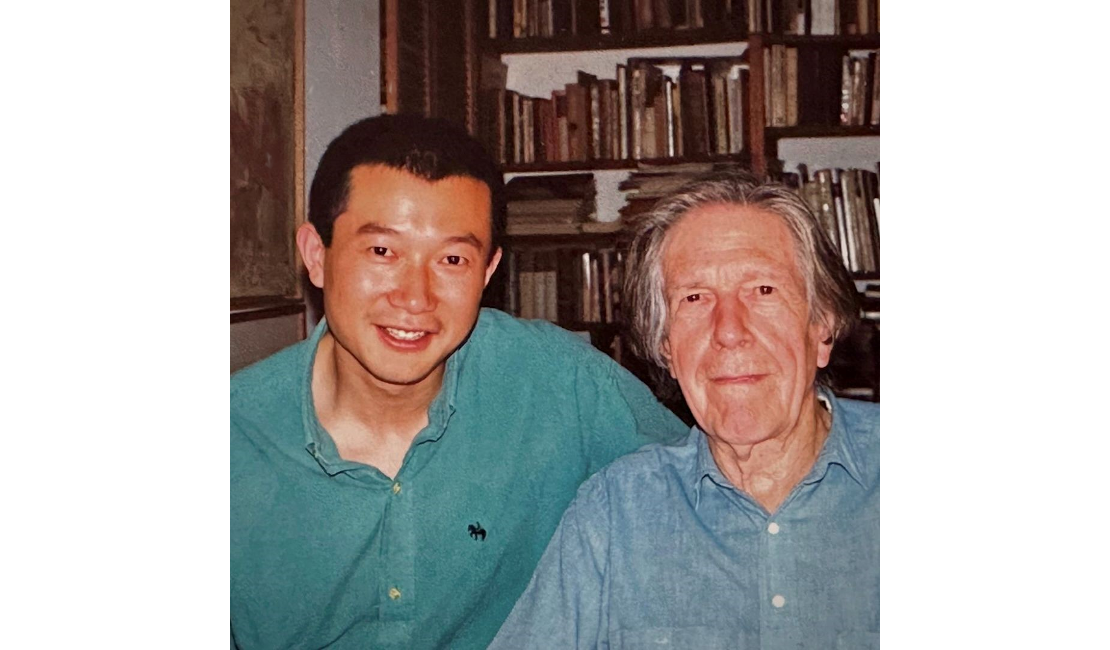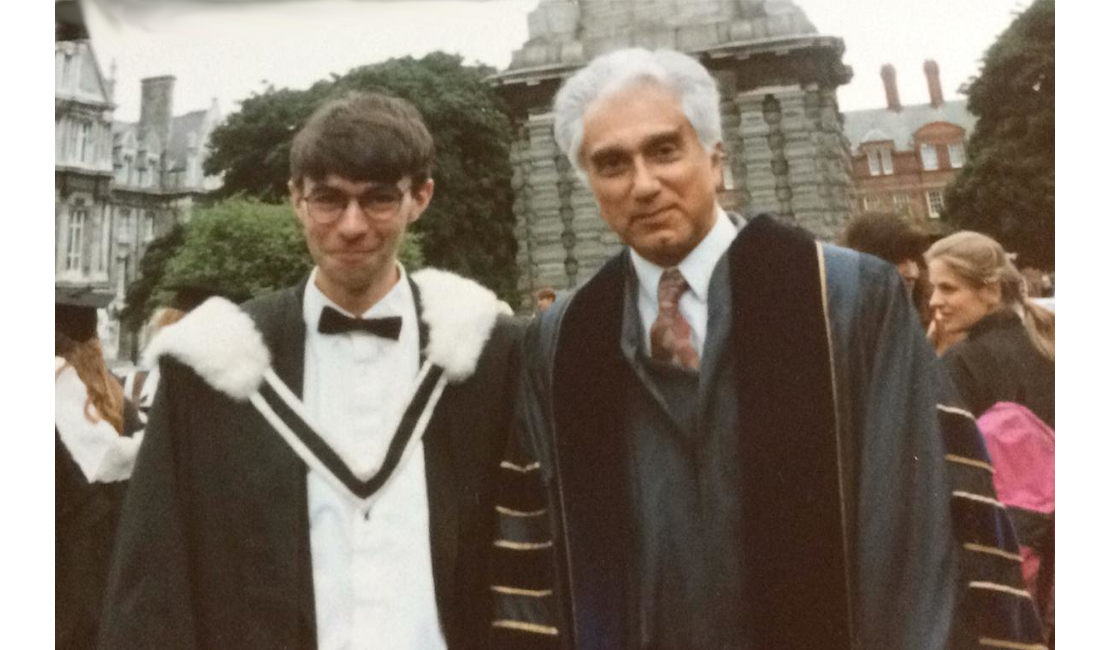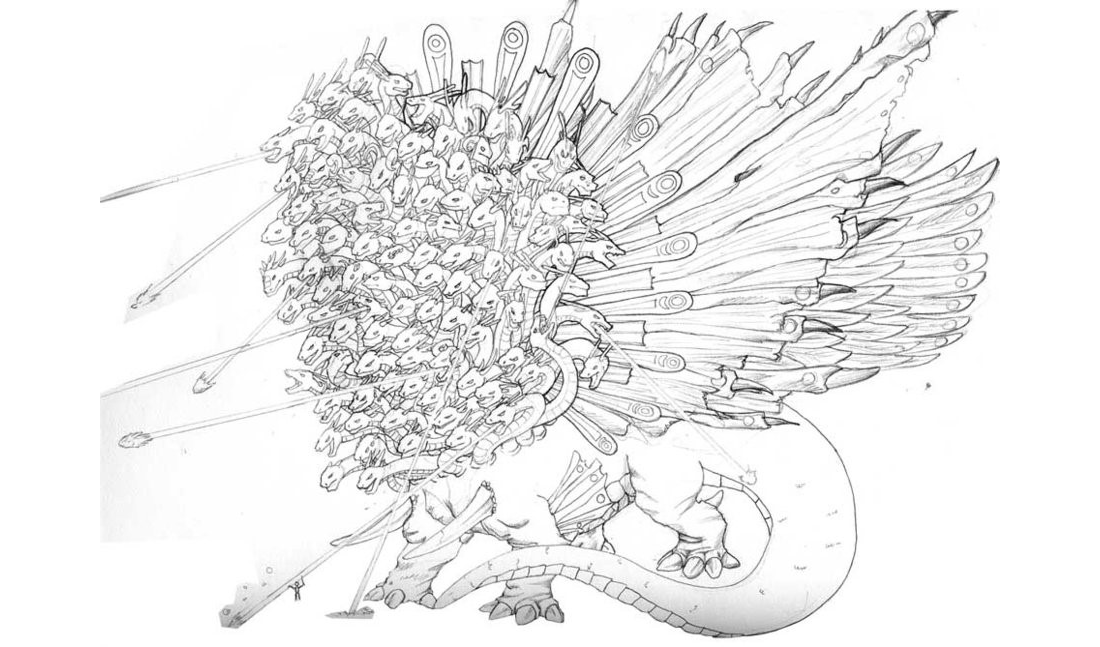Independent Repertoire: A Land of Immigrants — Perspectives from Abroad

The United States is a nation of immigrants, and so much of its artistic, linguistic, culinary, and cultural identity would be unimaginable without the contributions of those born outside America. The following works showcase the unique perspectives and striking cultural blends offered by composers coming to the U.S. from abroad.
Tan Dun, Concerto for Pizzicato Piano and Ten Instruments (1995)
Tan Dun’s Concerto for Pizzicato Piano and Ten Instruments is an arresting work for piano soloist performing a plucked, inside-the-piano part. The soloist is accompanied by a large ensemble of winds, percussion, guitar, harp, and strings. This early work of Tan Dun’s incorporates a range of influences from the composer’s life, from the “dance festival atmosphere” of the impromptu village celebrations he led on folk instruments and cooking pots in his native China to a jazz-influenced finale that reflects his longtime adopted home of New York. It also honors his mentor John Cage in setting the pitches of Cage’s last name (C-A-G-E), which Tan Dun hears as sonically related to Eastern musical traditions. This blending of cultures and the myriad ways that Tan Dun varies his simple motivic material reflect both the unique voice of this essential Chinese-American composer and the kind of musical cross-fertilization and innovation that American immigration has fostered — an extraordinary sonic experience for which we can all be grateful.

Tan Dun (left) and John Cage (right)
Franz Waxman, Sinfonietta (1955)
Like many other Jewish artists living in 1930s Germany, Franz Waxman was forced to flee Nazi persecution — first to Paris and ultimately to Los Angeles, where he quickly established himself as one of the foremost composers of both film and concert music. His Sinfonietta for string orchestra and timpani was composed after the Allied victory in World War II restored the opportunity to travel to Europe for visits and guest conducting. The piece was written in a burst of inspiration onboard the S.S. Cristoforo Columbo en route from New York to Zurich. Sinfonietta opens with great energy and drama, with a powerful three-chord gesture that quickly moves into a dynamic violin line reminiscent of Waxman’s work in Hollywood. Its emotional range and carefully crafted form cement his Sinfonietta as an enduring mid-century gem.
Daniel Catán, Caribbean Airs (2007)
Born in Mexico City, Daniel Catán spent much of his adult life in the U.S. as a beloved professor, writer, and composer. In Caribbean Airs, Catán’s lifelong love of Afro-Cuban rhythms is on full display; he explores them with sensitivity, affection, and creativity, pointing to both his multicultural upbringing (his grandfather spent five years in Cuba en route from Turkey to Mexico) and deep understanding of Cuban music. Over the course of three movements scored for symphony orchestra and three percussion soloists, Caribbean Airs moves through infectious ostinati, lyrical melodic writing, and fast-moving exchanges between instrumental groups, taking on the character of a concerto for orchestra. The result is a beautiful mixture of sincerity and good fun. As Catán asks of his listeners, “if you find your hands or feet beginning to twitch rhythmically without your permission, please do not stop them.”
Donnacha Dennehy, Memoria (2016)
Irish composer Donnacha Dennehy — who has now lived in the U.S. for more than a decade — writes that Memoria “is a piece inspired by the way people (or our inventions of those people) live on vividly in our minds, even when they are no longer there in real life.” It is dedicated to the memory of his composition teacher Hormoz Farhat, who deeply affected Dennehy and was a pivotal early voice encouraging him to study and spend time in the U.S. Dennehy has observed that there is often “a push and pull between a kind of austere Irish poeticism and an American pulsing dynamism” in his music, and this ebb and flow is particularly evident in Memoria as the piece moves between an ethereal opening to a more rhythmically active, grounded conclusion.

Donnacha Dennehy (left) and Hormoz Farhat (right) at Dennehy’s graduation from Trinity College, Dublin (Sheila Dennehy)
Bright Sheng, Never Far Away (2008)
In his harp concerto Never Far Away, Chinese-American composer Bright Sheng explores a musical language that synthesizes a wide range of influences. He compares this synthesis to that of creole languages, which evolve through contact between people who do not share a common tongue, but can eventually become their own rich, expressive languages with complex grammatical structures and extensive vocabularies. The style of Never Far Away thus represents a kind of musical creole, poignantly blending Chinese folk song, Chinese classical qin repertoire, and the Western symphonic tradition in three gorgeous movements for harp and orchestra.
Joan Tower, Made in America (2004)
At the age of nine, Joan Tower “crossed a fairly big bridge” when her family moved to La Paz, Bolivia. Spending nine years outside the U.S. as a child afforded Tower a kind of inside-out view of the U.S. She explains of her return as a young adult: “I was proud to have free choices, upward mobility, and the chance to try to become who I wanted to be. I also enjoyed the basic luxuries of an American citizen that we so often take for granted: hot running water, blankets for the cold winters, floors that are not made of dirt, and easy modes of transportation, among many other things.” Thinking about these experiences, Tower found the song “America the Beautiful” kept coming to her as she began to compose this work. It became the piece’s main theme, but it is continually challenged and complicated by other ideas and must find new ways to evolve and emerge from the orchestral texture. By imagining a sonic answer to the question “how do we keep America beautiful?”, Tower creates a moving celebration of our heritage — an example of thoughtful, sincere national pride that deeply rewards our listening.
Du Yun, Hundred Heads (2014)
Du Yun was born and raised in Shanghai and is now based in New York. In Hundred Heads, she displays her “relentless originality” (The New Yorker) through imagining the iconic American singer, songwriter, and pianist Ray Charles as the reincarnated hundred-headed creature of a Buddhist tale. Du Yun was captivated by Charles, feeling that he has his “own incarnations, his breaks, his many before-lives.” Faint echoes of Charles’ best-known tunes are woven through the piece’s wild, fierce orchestral textures. Throughout, Du Yun aptly captures the many faces of the title creature, Charles’ towering influence on the American music industry, and her own relentless questioning of our musical languages — “when does [a language] become our own. When an assimilation evolves to an assault. When the boundary of the divide stops.”

André Previn, Concerto for Orchestra (2016)
The Previn family fled Berlin in 1938 and ended up in Los Angeles, where young André quickly established himself as a promising young talent by writing and arranging music for Hollywood films; as the decades went on, Previn rose to fame as a consummate and singular musician. He conducted 200 years of classical repertoire with the utmost integrity, he could lead a Mozart concerto or a jazz trio from the keyboard with equal aplomb, he was a compelling, eloquent ambassador for music on television, and he received four Oscars and ten Grammys across fifty years in music. He embodied the American Dream, and his own composing culminated in this final work for orchestra, which synthesizes his many musical interests and echoes the composers he loved to conduct — Tchaikovsky, Barber, Shostakovich, Gershwin, and Mahler. And yet, it is original, passionate, and masterful at every turn, teeming with earworms and heartthrobs, exquisitely orchestrated, and paced with the utmost economy.
Explore American Themes in Classical Music
American Cityscapes and Landscapes | American History and Politics | Engaging with American Musical Traditions | Inspired by American Art and Writing | American Minimalism | A Land of Immigrants: Perspectives from Abroad | American Optimism — Grappling with Dark and Light
